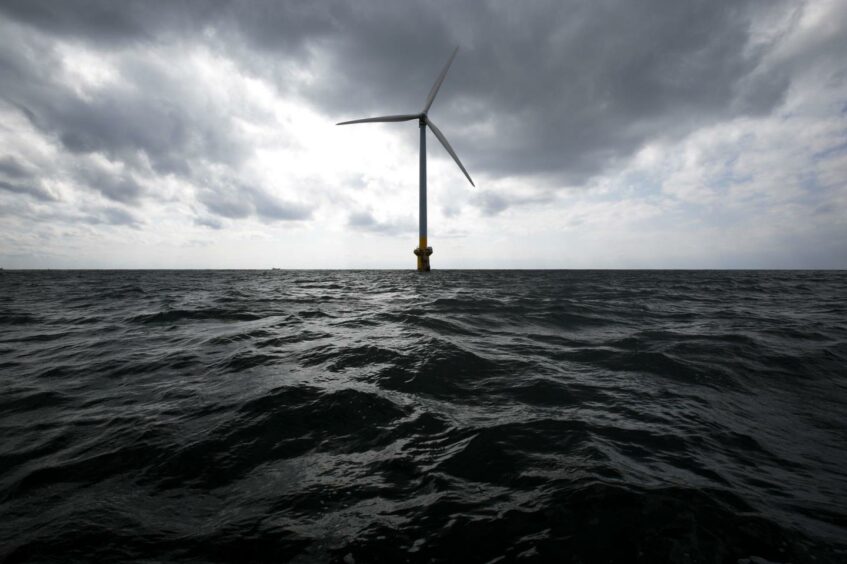
Decarbonisation of oil and gas activities in the North Sea, largely through electrification, will play a central role in Scotland’s ongoing energy transition.
Next-generation offshore wind is key to that process and will be deployed at scale, on an accelerated timeline, under Crown Estate Scotland’s upcoming Innovation and Targeted Oil and Gas (INTOG) leasing round.
And successful projects will not only reduce emissions across oil and gas assets, they will also provide a foundation for delivery of the up to 15GW of floating wind awarded through ScotWind round and other large-scale offshore wind projects.
North Sea 2.0
INTOG represents a crucial step on the UK’s net zero journey: cutting carbon, improving energy security, and proving cutting-edge technologies.
And with buy-in from oil and gas operators, the leasing round also offers the chance to integrate hard-won offshore experience with next-generation energy suppliers to achieve shared goals.
Norway is already one step ahead. Aker Solutions, for instance, is proud to have helped deliver the Hywind Tampen floating wind project for Equinor, fabricating and installing innovative concrete spars as part of plans to power the Gullfaks and Snorre platforms.
The project builds on an electrification journey that began in Norway in the 1990s, delivering not only a more carbon-efficient oil and gas industry but a supply chain with direct and relevant experience across engineering, innovation, fabrication and execution.
For a company like Aker Solutions, this is what the future is all about: new technologies driving growth and diversification while reducing carbon emissions both inhouse and for our partners and customers. In support of this, we’re recruiting 200 employees in the UK throughout 2022 – increasing our UK workforce by 25% – with the aim to drive significant growth in renewables and low carbon oil and gas solutions, and reach our target of net zero by 2050.
Proving ground
INTOG offers a similar chance to develop, refine and deploy the technologies that will be required to build next-generation floating and fixed wind projects in Scotland and the rest of the UK.
Advances in foundation design and fabrication will be particularly important for floating projects. Whether steel or concrete, spar or semisub, many hundreds of substructures will likely be required to support the ambitions of INTOG and ScotWind.
Scottish yards will have the opportunity to build the infrastructure, experience, expertise and market position required to deliver at scale, providing a significant boost to local content and subsequently to investment, jobs and continuity.
On connection infrastructure, INTOG projects are likely to accelerate development and deployment of technologies including dynamic cabling, higher voltage array wires, and innovative substation solutions.
The latter includes subsea modules as well as floating substations. Aker Solutions believes capex savings can be significant compared with the traditional fixed platform substation, while carbon footprints are also dramatically reduced on the back of more streamlined fabrication, installation and maintenance. Lower capex will also make the electrification of ageing oil and gas assets more viable which is fundamental to accelerating the energy transition.
INTOG is also expected to facilitate the roll-out of green hydrogen. Production driven by offshore wind installations could be used as a storage medium, for export to shore, and to replace gas as a means to power oil and gas platforms.
Milestone moment
INTOG has the chance to be a milestone moment for Scotland and the rest of the UK’s energy transition journey.
Success will provide the groundwork for delivery of ScotWind, help to establish supply chains and expertise to serve a global market, and will achieve a significant decarbonisation of UK oil and gas through electrification.
The impacts will be greatest if North Sea operators engage fully with the process; INTOG is an opportunity for oil and gas to meet the challenge of net-zero head-on while also enhancing security of supply and investing in future solutions.
Together, the energy sector can accomplish something significant and important off Scotland in the remaining years of this decade, in terms of both the climate and the economy. That is surely a win-win.
Recommended for you

 © Supplied by Aker Solutions
© Supplied by Aker Solutions